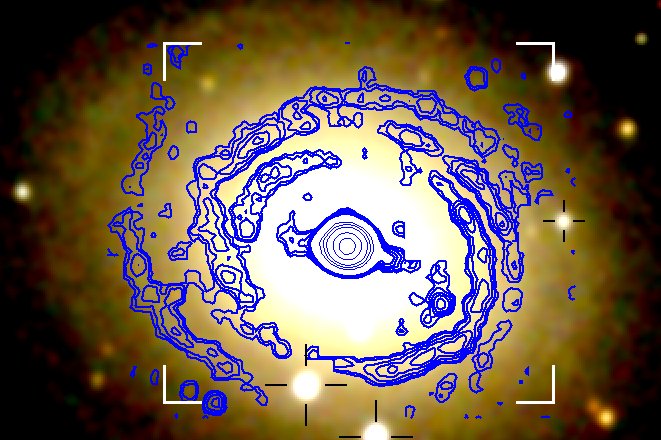Using data from the SDSS and CALIFA surveys, a team of astronomers, led by Jean Michel Gomes and Polychronis Papaderos from the Instituto de Astrofísica e Ciências do Espaço (IA), in Portugal, discovered in the optical faint star-forming spiral-arm-like features in the periphery of nearby early-type galaxies.
Usually, star-forming regions are blue areas, HII-regions1 that house short-lived massive blue stars, embedded in the disk section of spiral galaxies. In contrast, Elliptical and Lenticular galaxies (historically referred to as early-type galaxies2) are composed of old stars with reddish colors, and are thought to be “dead” spheroids, no longer giving birth to new stars.
Notes:
- HII Regions are emission nebulae, giant clouds of ionized Hydrogen. The recent star formation that recently occurred in these clouds produced giant, short-lived blue stars, which emit massive amounts of ultraviolet radiation and ionizes the gas around them. In astronomy, the use of the Roman numeral refers to the ionization state, with “I” (Roman numeral for 1) representing a neutral element, “II” an ionized element (in this case, H+), “III” a doubly ionized element (for example Fe2+), and so on.
- Early-type galaxies are Elliptical and Lenticular (S0) galaxies, with round or elliptical outlines. The “early-type” designation comes from the morphological classification of galaxies, originally created by Edwin Hubble and later expanded by Gérard de Vaucouleurs, which distinguishes galaxies between early-type (Elliptical and Lenticular), and late-type (spirals and irregulars), along a “tuning fork” diagram.


